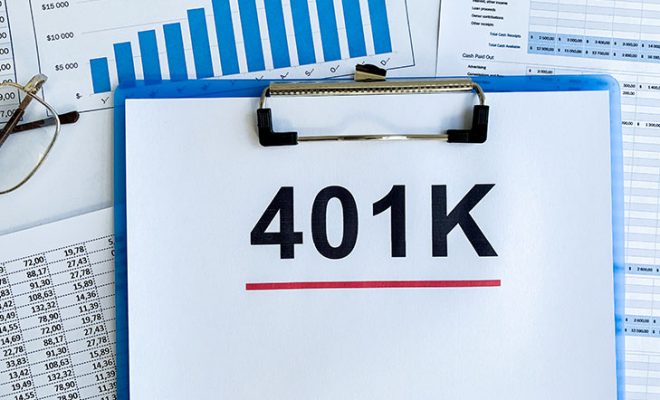Types of Funds to Choose For Your 401(k)

Investing in a 401(k) is one of the most popular way that workers in the U.S. use to build up savings for their retirement. In 2020, there were more than 600,000 401(k) plans, with over 60 million active participants and many other former employees and retirees. This employer-sponsored program is primarily popular because of its tax-advantages and automated contributions. Experts suggest investing in a 401(k) early in life to maximize your earnings in the long run.
But even though investing in a company 401(k) is relatively easy, most investors do not understand how the account operates and how to make the most optimal investment. As per a recent poll conducted by ValuePenguin, only a third of Americans understand how the 401(k) account operates.
Given the advantages offered by the 401(k) plan, the plan has the potential to become the best wealth-building tool for your retirement years. However, for this, you must choose the right funds in your 401(k)-investment portfolio. The variety of investments in your 401(k) depends on your plan sponsor (your employer) and the choices they make. Ideally, your employer will offer you a choice of funds to invest in as per their discretion.
The company has a fiduciary responsibility to offer the best funds for your retirement plan. At the very minimum, you will have a choice to select from three basic types of 401(k) fund options: A stock option, a bond option, and a cash or stable value option. In most cases, employers provide several investment options that primarily comprise mutual funds. A few company-sponsored 401(k) plans also offer exchange-traded funds (ETFs).
As an employee, it is your duty to make an informed decision to fund your future retirement needs. Typically, a 401(k) plan offers at least 10-12 investment fund options. Some plans might offer dozens of choices, including target-date funds. In all, 401(k) mutual fund options can range from conservative to aggressive, with several choices in between of varying degrees of risk.
Read on to know more about the types of funds you can choose for your 401(k) account.
Types of 401(k) funds
Here are six different types of funds that you should know of:
-
- Conservative mutual funds: A conservative fund typically comprises bonds and other safe investments. The main objective of such mutual funds is to minimize risk and preserve capital while providing secure returns. Usually, the value of a conservative fund grows slowly and more predictably.
- Value mutual funds: This type of fund is neither too risky nor too conservative. This fund invests mostly in stable and recognized companies that are undervalued. The objective is to earn regular and attractive dividends from these undervalued companies that are expected to grow modestly over a long period.
- Balanced mutual funds: A balanced fund involves a moderate level of risk in investments while generating a higher return than conservative investments. In such funds, your portfolio usually includes stocks and safe bonds, with an influx of risky equities in a balanced ratio.
- Aggressive mutual funds: An aggressive mutual fund provides capital gains by investing heavily in shares of growth company stocks. Investments in such companies demonstrate high growth potential but at a significantly higher risk. This type of mutual fund provides quick profits or losses.
- Specialized mutual funds: These mutual funds specifically invest in a particular area. This could include emerging markets, new technologies, utilities, or pharmaceuticals.
- Target-date funds: These are mutual funds that offer a simple investment solution by offering a portfolio whose asset allocation becomes more conservative as the target date approaches. These funds are ideal for people nearing their retirement age as these funds aim to maximize your investment around a specific time.
When you choose to invest in a mutual fund, you must be wary of the risks as well as be prepared for losing money in case of wrong investment decisions. However, since your employer is governed by a fiduciary duty, they try their best to provide you with several wise mutual fund options from diverse categories.
Mutual funds to consider
Some of the mutual fund choices you can consider for your 401(k) plan are:
-
- S&P 500 Index Fund: This is a low-cost index fund where you can invest in large-cap stocks. Experts recommend this as a good option to build your 401(k) portfolio. The S&P 500 Index is a market capitalized and weighted fund that consists of 500 of the largest U.S. firms publicly-traded. If you add this fund to your portfolio, it is advisable not to add any other large-cap stocks. Investing in multiple large-cap funds can result in fund overlap that may not be an ideal diversification strategy.
- Foreign stock fund: Also known as international funds, these funds include investments in companies aligned with your investment goals. This can be global company holdings or region-focused companies. In most cases, foreign stock funds deliver high returns, but they also come with significantly high risks, such as the impact of currency exchange rates. Ideally, you can consider investing in one good foreign stock fund. However, even though most foreign stocks include 80% of investments in companies outside the U.S., 20% of the holdings might be vested in U.S. companies. This investment mix can lead to overlap and defeat the objective of optimum diversification.
- Small-cap stock fund: These funds comprise publicly traded companies with a market capitalization between $300 million and $2 billion. Over the years, these funds have registered aggressive growth but also high volatility. Even as per historical evidence, small-cap stock funds offer higher long-term returns as compared to large-cap funds. You can consider investing in an aggressive stock fund, which complements an S&P 500 Index fund. Moreover, because these small-cap stock funds are not directly correlated to the S&P 500 Index fund, your portfolio is optimally diversified.
- Total bond market index fund: Some companies also give an option to invest in total bond market index funds or exchange-traded funds (ETFs). Generally, these funds hold corporate-level bonds along with some municipal bonds, high-grade mortgage-backed securities (MBS), and even Treasury bonds in some cases. It can be beneficial to include a total bond index fund in your 401(k) portfolio as it can provide you with diversified exposure to the total bond market.
- Money market funds: To optimally diversify a portfolio, you can also consider adding a money market fund to your 401(k) plan. This market fund is a great mode for cash because it primarily comprises highly liquid holdings. This also works well for you if you wish to invest in a 401(k) account but do not want to opt for any stocks or bonds and prefer keeping your holdings as liquid as possible.
- Target date retirement funds: As mentioned above, target-date funds have become a reliable choice for most 401(k) plans. These funds allow you to choose a target, timing it close to your goal, such as retirement. You can opt to invest all your assets in target-date funds. These funds will grow as per optimum diversification strategies, and as you approach the target date, the allocation will shift to a more conservative one. For instance, if you expect to retire in the year 2035, you can allocate all your assets in a target date 2035 fund. The fund will work to generate high returns until it reaches the retirement age, when the holdings will become more safe than profitable.
Mutual funds to stay away from
Some of the mutual funds you can consider not including in your 401(k) plan are:
-
- Emerging market funds: Even though promising, emerging market funds are one of the riskiest foreign stock investments. These funds invest your money in companies in emerging countries. These funds are not as stable as the developed market funds but are more viable than frontier market funds. These funds are risky because they can give short-term gains but can in no time also result in heavy short-term losses. If you wish to include an emerging market fund, it is beneficial if you balance it with a regular developed foreign stock fund. However, experts recommend that the total foreign stock exposure be under 20% of your 401(k) portfolio.
- Sector funds: Sector funds invest all your contributions in a particular sector of the overall market. This makes the portfolio highly centric and dependent on the performance of a specific sector, which increases the risk of loss. These investments have a narrow focus and hence, are prone to unique sector-based risks.
- Junk bond funds: Junk bond funds are baskets that hold lower investment-grade bonds from corporations and other firms. These junk bonds yield a high return but carry a heavy risk of loss due to default and credit risk factors. The companies involved are often low on creditworthiness, which increases the risk of bankruptcy and default on their debt.
Other investment options
Some other types of investments offered by a 401(k) plan include:
-
- Company stock: In case your employer is a publicly traded company, your 401(k)-investment menu will likely comprise of company stock or a fund that invests in only the stock of your company. Further, your employer might offer incentives or use other means to encourage you to make this choice. For instance, your employer might give you the company stock at a much lower price than otherwise available in the market. In other cases, your employer might contribute a higher percentage of your salary if you invest in the company stock. Alternatively, investing in your company stock helps you gain partial ownership and improve your commitment to the company. In some situations, investing in company stock might also enable you to share the profits if the company prospers. However, it may be advisable not to invest too heavily in the company stock because this could lead to inefficient diversification, which can be riskier.
- Individual stocks, bonds, and other securities: In some 401(k) plans you get a brokerage window through which you can invest in a wide variety of securities. The account functions like a regular taxable brokerage account with buy and sell orders. But since a 401(k) plan is tax-deferred, you are not liable to pay any capital gains on the profit that you earn when you sell a stock or bond for more than the price you originally paid. However, in all circumstances, including the above, you will be liable to pay ordinary income tax charges when you withdraw money from your traditional tax-deferred 401(k) plan. Besides, you might also have to pay an annual fee for your brokerage account and would incur transaction costs and commissions on each trade you execute through your account. In all, you might end up paying a much higher amount for securities and even for mutual funds that you buy through a brokerage account.
- Variable annuities: Some employers also provide you with an option to invest in variable annuities. Variable annuities, especially ones that come with a lifetime income rider, provide you with a reliable income source. In a variable annuity, you can select your investments, which will generate an income in retirement as per their performance in the market. This is a great opportunity to get higher returns, but such annuities also carry a high risk.
What to consider before investing in a 401(k)
Once you know all your 401(k) fund choices, you must make an informed decision considering important aspects, such as:
-
- Your risk tolerance: This can change as per various factors, such as your age, financial goals, income, etc.
- Your age and life stage: If you are near your retirement age, you should ideally consider conservative or similar funds that offer low risk but secure returns. Alternatively, if you are young, think of investing in more aggressive funds.
- Your retirement goal or the sum needed for a secure retirement: Experts recommend substituting 80% of your retirement income through Social Security benefits, pension, etc. The remainder can come from other income sources. In this, you can estimate your 401(k) account to substitute 5-6% of your income during retirement via annual returns.
To sum it up
The basic motto is to build a 401(k)-portfolio, keeping in mind your retirement needs, age, life stage, and risk appetite. Also, make sure to spread your 401(k) holdings across different funds in the right ratio. Diversification will enable you to tap returns from a mix of investments while also preserving your balance against the risk of a downturn due to a crash of any particular asset class. If you are confused about how to structure an optimal 401(k) portfolio, consider consulting a professional financial advisor to help you secure your golden years.










